














Albert Tripp, the City Manager of Airway Heights, is a true symbol of dedication and innovation in municipal governance. His journey, from the flat landscapes of Alabama to the diverse terrains of the Pacific Northwest, showcases the profound impact of public service on transforming communities.
Born and raised in Alabama, a young Albert Tripp nurtured ambitions that would eventually guide him away from the everevolving landscapes of his childhood. Although Alabama has undergone its own transformation, it was the allure of higher education and a career in public service that beckoned him towards the Pacific Northwest—a region celebrated for its environmental diversity and dynamic communities.
Tripp initially embarked on a path rooted in criminal justice, yearning for a future in federal law enforcement. However, his journey took an unexpected turn towards public administration, culminating in his appointment as the City Manager of Airway Heights in 2008. His tenure has not been without challenges, notably navigating the city through the complexities of the 2008 recession shortly after assuming office and then through the COVID pandemic. Yet, these trying times tested his leadership skills and ultimately fortified his vision and resolve for the city.
Under Tripp’s guidance, Airway Heights has undergone a remarkable transformation, characterized by significant population growth and economic development. His leadership philosophy centers
prosperity.
At the core of his vision for Airway Heights lies a steadfast commitment to sustainable development, public safety, and enhancing the quality of life for all residents. Tripp has advocated for projects addressing crucial aspects of the city’s infrastructure, from water system restoration to the expansion of transportation networks. This holistic approach to city management not only prioritizes inclusivity and accessibility but also champions the collaborative spirit that defines a vibrant community.
Yet, what truly sets Tripp apart is his unwavering belief in the profound impact of public service. He sees his role as more than just a manager, viewing it through the lens of service to others—a mission to touch lives in meaningful ways.
responsibility with unwavering dedication.
“I would say what I enjoy most about this work is that it has less to do with being the city manager role and more to do with just public service in general,” Tripp explains, “I don’t think there’s any other role out there that provides an opportunity for people to make the impact that you have when you’re working in public service. I don’t know of any other profession out there that gives someone the ability to be able to touch so many people’s lives in a variety of ways.”
His personal story is one of transition, from an aspiring law enforcement officer to a pivotal figure in local government, driven by a deep-seated desire to serve and uplift the community. Enriched by his Alabama heritage, his love
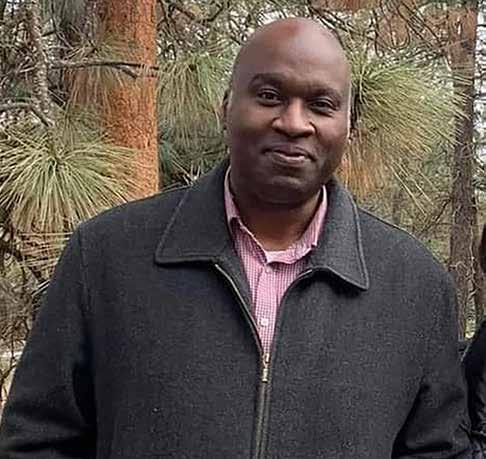
home—shaping the place he serves, cherishes, and enjoys living in.
“I really like the dynamic nature of the Pacific Northwest. Like with Washington, for example there are about four or five different separate climates in the state, everything from your desert to your rainforest. I really enjoy that diversity of it, and the ability to be able to get out and get engaged in it. That can look like hiking, camping, fishing, hunting or like myself, all the above.”
Looking ahead, Tripp envisions an Airway Heights that continues to thrive through innovation, community engagement, and strategic development. His plans for the city are ambitious yet rooted in meeting the practical needs of its residents. From addressing the scarcity of quality childcare to expanding economic opportunities and implementing comprehensive approaches to public safety including more multi-modal pathways, Tripp’s vision is firmly focused on building a community that thrives on collaboration and inclusivity.
Tripp’s final thoughts echo a deep appreciation for the community he serves including the United States Fairchild Airforce Base and the collective spirit that propels Airway Heights forward. “We also appreciate being home to some of the airmen and airwomen who work at the installation, who also live in Airway Heights and call Airway Heights home.” Tripp shares that he works closely with Fairchild when planning in both the short term and long term.
As Airway Heights continues to grow and evolve, Tripp’s legacy will undoubtedly be remembered for the foundational changes he has introduced, fostering a community that is resilient, inclusive, and poised for a bright future. “Myself and the rest of our entire team here, just really appreciate how supportive the community is in general for the work that we do.”




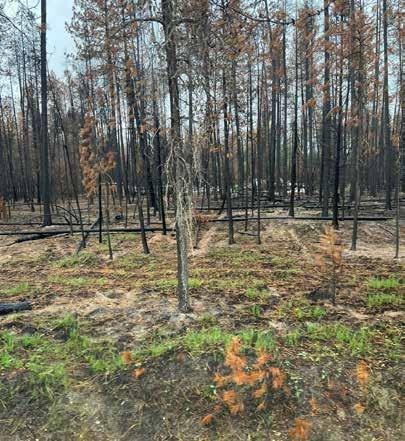




Growing enough food to feed our nation is a complex and multifaceted endeavor, and AgWest Farm Credit (AgWest) and Northwest Agricultural Consultants (NWAG) are again teaming up to spotlight producers in our region who provide that bounty.
AgWest and NWAG specialize in vital, often behind-the-scenes services that power agriculture in our region. AgWest is the leading finance and related services provider for the ag community, from farmers and ranchers to agribusinesses and crop insurance. NWAG is a soil, plant and water-testing laboratory.
March is National Agriculture Month, and NWAG and AgWest are again celebrating the impact our region’s ag community makes for people facing hunger; together they are matching the first $15,000 donated to Second Harvest during Ag Month.
“Like food banks across the nation, we continue to face major challenges in obtaining food to share with those in need,” said Jason Clark, CEO of Second Harvest. “Yet when we talk with our fellow Feeding America partners in other states, we’re reminded how fortunate we are to be in one of the most productive food-producing regions anywhere. AgWest and NWAG are

integral to producing healthy food.”
"AgWest Farm Credit understands the crucial importance of a robust and productive agricultural industry to nourish communities,” said Heidi Whitman, director of marketing and public relations. “It's especially vital that we join hands in efforts to cultivate fresh and nutritious food to share with our neighbors who are experiencing food insecurity. Good food fosters great communities, and we take pride in working alongside local farmers, producers, and Second Harvest to make a difference throughout the Inland Northwest."
Wade Carter, president of NWAG concurred. “We are fortunate to live in an area with both great soils and hardworking growers, which combine to create one of the most important food-producing regions in the world."
Hunger is unnecessary, unacceptable, and starves human potential. Ag industry partners come together with a common goal of nourishing our neighbors through contributions of good food and practical solutions because no one deserves to be hungry. Healthy food does more than sustain people today, it fuels opportunity and

provides hope for tomorrow.
All this month – including National Ag Day on March 19 – Second Harvest is honoring the ag community, highlighting agriculture’s contributions on social media and at both our hunger solution centers, in Pasco and Spokane.
AgWest Farm Credit is contributing $10,000 and Northwest Agricultural Consultants is contributing $5,000 to help Second Harvest obtain food for people in the region facing food insecurity. During the month of March, AgWest and NWAG will match the first $15,000 donated. Take action at www.2-harvest.org/ag.
Second Harvest is happy to arrange onsite visits at our distribution centers to capture footage of bulk fresh food donations arriving, volunteers repacking fresh fruits and vegetables, and to help connect media with ag partners for interviews.
About Northwest Agricultural Consultants
Northwest Agricultural Consultants of Kennewick is a full-service laboratory that specializes in wheat, potatoes, corn, beans, peas, onions, hops, tree fruits and
vineyards. The lab provides in-house soil, plant and water testing services for Washington, Oregon and Idaho clients, specializing in soil and plant tissue analysis for fertility requirements and the best yield. Learn more at: http://nwag. com/.
About AgWest Farm Credit
AgWest is a $30 billion financial cooperative that provides financing and related services to farmers, ranchers, agribusinesses, commercial fishermen, timber producers, rural homeowners and crop insurance customers in a seven-state territory in the Western United States. AgWest is part of the 106-year-old Farm Credit System – the leading provider of credit to American agriculture. AgWest serves customers in 59 locations throughout the West. Learn more at: http://agwestfc.com/.
About Second Harvest
Second Harvest was founded in 1971 as a central warehouse for a handful of emergency food pantries in Spokane. Today, hunger solution centers in Spokane and the Tri-Cities supply donated food to 250 partner food banks, meal sites and other programs—including its own Mobile Market free food distributions— providing food for more than 80,000 meals each day in Eastern Washington and North Idaho. For more on Second Harvest, visit: 2-harvest.org.


Airway Heights is set to undergo a major transformation through the U.S. Highway 2 Pedestrian Safety Improvement Project. Led by city planners, community members, and stakeholders, this ambitious initiative aims to enhance safety for pedestrians and cyclists while fostering a sense of community. Divided into two phases, the project will focus on improving the segment from Lawson to Lundstrom and from Craig Road to Garfield Road.
The project's primary objective is to incorporate various transportation options, such as walking, biking, rolling, and transit, for the daily fabric of Airway Heights. Safety and accessibility for all community members are the top priorities.
Community input has been important to the project's planning stages, with insights drawn from the 2017 U.S. 2 Corridor Plan and the 2021 Downtown Plan. Crafted through extensive community engagement, these plans reflect the community's goals for a traditional downtown experience characterized by small businesses, a cozy smalltown ambiance, and a pedestrianfriendly environment.
“Based on community input they felt that it was their traditional downtown,” Heather Trautman, Principal Planner for the City of Airway Heights on this project explains how the corridor was chosen. “They really liked the smalltown feel. They wanted smaller businesses that focused on services that are unique.”
To create a vibrant and accessible downtown core, the project proposes essential measures. These include reducing speed limits from 35 to 25mph, incorporating green spaces, implementing pedestrian crossings with advanced signaling systems, and ensuring continuous sidewalks along storefronts. By thoughtfully blending greenery, public art, and


urban design elements, the project aims to cultivate a welcoming downtown atmosphere that encourages residents and visitors to explore and connect.
The project intends to address automobile dependency by maintaining current traffic lanes while prioritizing safety and access across the corridor. Key strategies include redesigning crossings and integrating multimodal paths to bridge residential areas with essential city services. The goal is to reduce reliance on cars and encourage alternative modes of transportation. The project team has been working closely with the Spokane Transit Authority to decide on the best position for the bus stops.
As the project moves forward after just reaching a 30% completion milestone in February, there will still be opportunities for public input and refinement as the design and planning reaches the next milestone. This process ensures that the evolving design remains responsive to the community's needs. Feedback will cover aspects ranging from pedestrian safety enhancements to functional and aesthetic improvements to the public areas.
The project is scheduled to complete the planning, engineering, and design phases for both Phase 1 and Phase 2 by June. This progress sets the stage for securing construction funding, emphasizing
the collaborative effort required to achieve transformative urban development. Federal and state grants will play a crucial role in bringing this project to fruition.
“Projects are broken up into what's called planning, engineering, and design. And then the second part is construction. The grants we received were for planning, engineering, and design, and that will be complete in June of this year.” Trautman and her team are looking past the completion of part one. “We're already working on what comes after that, which is for construction money. Public projects are funded predominantly through federal grants and state grants. Most projects require grant funding because local dollars received through property taxes and sales tax are not enough.”
Embracing sustainability and environmental considerations, the project includes measures like drought-resistant plantings and the use of reclaimed water for irrigation. These actions align with broader goals of enhancing urban resilience and promoting sustainable community development.
In addition to community feedback during planning stages, the U.S. Highway 2 Pedestrian Safety Improvement Project provides opportunities for ongoing community input. Heather Trautman provided information about upcoming meetings and events
designed to engage the community. The next meeting is scheduled for March 25th, divided into two parts: 11:30 AM to 1:30 PM at the Hub on US 2 and 4:30 PM to 6:30 PM at the Airway Heights Recreation Center. The project will also participate in a joint community engagement event with Spokane Transit Authority at the Norway Heights library on March 28th from 4 PM to 6 PM, along with other community partners. More events are planned for April, May, and June, and the project website, as well as the City of Airway Heights' Facebook page, will provide information on these upcoming events.
“We invite people to take a turn, go through Airway Heights, and see what it has to offer,” Trautman encourages everyone, not just local residents to experience Airway Heights, “with regards to residential areas, parks and other services. And even Highway 2, since it is a big part of the community.”
The U.S. Highway 2 Pedestrian Safety Improvement Project aims to make Airway Heights safer, more connected, and vibrant. By transforming the main thoroughfare, the city will create growth, safety, and inclusivity, while fostering community pride and belonging. This project will enhance pedestrian and cyclist safety, creating a renewed sense of place that reflects Airway Heights community's values and aspirations for a thriving future.

Medical Lake’s City Council dealt with a variety of issues at meetings in February and early March, beginning with an ordinance dealing with vacant commercial properties in the city and ending with an electrical metering agreement with the soon-to-be built solar array at the wastewater treatment plant.
Feb. 6 meeting
Council unanimously passed Ordinance 1113 dealing with vacant commercial properties in the city. City Administrator Sonny Weathers reiterated previous discussions about the ordinance, which included adding language addressing such things as definition of structures, registration requirements, challenges related to window screening and the approval process.
“We also discussed how vacant, unattended commercial properties pose challenges to property taxes, tax revenues and community safety,” Weathers added.
The ordinance establishes a new chapter in the city’s municipal code, Chapter 14.16, that gives Medical Lake the authority and tools to require landlords and property owners to register “vacant, foreclosed and abandoned” properties along with an “enforceable legal framework” to require minimal maintenance and safety standards for these properties. Enforcement of any violations would be a civil infraction, with process and penalties per city code.
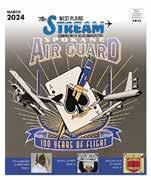
The first read was passed 6-0 on Nov. 21, 2023, with a couple of amendments.
Council unanimously approved entering into a three-year agreement with 8X8, Inc. for providing phone service to city facilities. The company was recommended by city staff and the city’s contracted information technology service, the latter noting 8X8 is the company they use and would recommend as part of modernization of the city’s communication and information system.
The city currently uses Lumen as the phone service provider. Finance Director Koss Ronholts said it’s a
“very, very old system.”
“The seller for me is that we’re actually decreasing down from a monthly payment with Lumen of $1,010 a month, down to $240 a month with 8X8,” Ronholt said, adding the price didn’t include a fax line, which would add a little bit to the monthly rate.
Councilman Ted Olson expressed concerns with the contract’s pricing section, specifically the clause allowing 8X8 to raise rates up to 5% at the beginning of the contract’s renewal period.
“They’ve got our hands tied,” Olson said.
Ronholt said the city’s legal team reviewed the contract. While the price increase is possible, considering the monthly payment reduction from over $1,000 to $240, Ronholt said he sees it as “a viable choice.”
Council also unanimously approved a resolution voiding over $4,166 of certain outstanding noninterest bearing warrants. Ronholt explained the resolution is “a bit of housekeeping,” noting the city has gone through two recent banking transitions resulting in a couple of old accounts with outstanding claims.
Ronholt said he would still attempt to contact the individuals and organizations on the list, adding many of them are refunds for things like parks and recreation fees.
Feb. 20 meeting
Council unanimously approved a contract with Cintas, a supplier of workplace items such as uniforms, floor mats, towels, mops and other related services. The items would mainly be used by personnel at the city’s wastewater treatment plant.
Weathers said the contract would save the city in delivery time at roughly the same cost as their current supplier of these items. While the contract originates with the treatment plant, it could eventually be used citywide.
“It will essentially establish the relationship with the city,” Weathers added. “We won’t need an additional agreement to serve Maintenance, or City Hall.”
According to the quote from Cintas, the average weekly total for items would be $341.97.
Council passed a resolution that was added to the agenda to award the contract for the as-built, design and construction documents for the City Hall commercial kitchen build-out to the Sandpoint, Idaho company Back To Terra. The $19,200 contract will be billed in increments, beginning with a $2,850 lump sum payment for architectural as built /demolition floor plan to get the project started.
March 5 meeting
Council unanimously approved a pair of resolutions regarding contracts for services. The first was an extension of an existing contract signed in 2010 with Barr-Tech, LLC to handle disposal of biosolids and green waste in the city.
The original contract was extended in 2017, but expired Dec. 31, 2021. Since then, both parties have performed their respective responsibilities per the stipulations of the original agreement.
The new extension continues those responsibilities to Dec. 31, 2028.
The second contract was for net energy metering interconnection services from Avista Utilities. The contract is in conjunction with the city’s intention to build a solar array — also in conjunction with Avista — at the wastewater treatment plant, construction of which was to have begun last year but was delayed due to supply issues.
“This metering agreement is a key element of that contract,” City Administrator Sonny Weathers said.
According to the website Solar Reviews, net metering is “the utility billing practice of recording the excess energy generated by a solar installation and applying it to the customer’s bill as credit toward energy drawn from the grid.” If the electricity Avista supplies to the city’s plant exceeds what the solar array produces and supplies back to Avista, the city will be billed the net between the two.
If the amount of energy produced by the plant’s solar array exceeds what Avista supplies, then the city will be billed the appropriate service charge as others in a similar rate class and credited for the excess electricity during the same billing period, with the credit appearing on the following month’s bill.
Matter surrounding city facilities upgrades, along with wages and benefits and city processes highlighted Airway Heights City Council meetings in late February, early March.
Parks shelters repaired; fields grant sought
Council gave its approval at the Feb. 12 study session for execution of an agreement and grant application by the Parks & Recreation Department dealing with a couple of upcoming projects.
The first was a $27,000 agreement with SPVV Landscape Architects for preparation of the final design, permitting, bidding and construction administration for shelters 2 and 3 and repair of the storage building at Martella Park. The city has been awarded a $100,000 grant towards repairing the shelter roofs and residing the storage building, projects estimated to cost $432,341 and must be finished by June 30, 2024.
Parks & Recreation Director J.C. Kennedy said shelter 1 was not included in the contract as it is too damaged to repair and needs complete replacement. If money can’t be found to replace the shelter, the city will close it as a public safety hazard.
Council also approved a $5,000 contract with SPVV for assistance applying for a grant from the state’s Community Outdoor Athletic Facilities (COAF) program. The program will distribute $12 million this year, with $1.2 million allocated to the Northeast Region of Chelan, Douglas, Ferry, Lincoln, Okanogan, Pend Oreille, Spokane and Stevens counties.
Kennedy told council if they were successful, the grant would be used for expansion of multipurpose fields and parking at the city’s recreation center on Deno Road.
“We have a dire need for field space right now,” Kennedy said. Council approves wages and benefits agreements
At its Feb. 20 meeting, City Council unanimously approved a
new collective bargaining agreement with the union representing the city’s non-uniformed staff in the Public Works, Parks & Recreation, Building, Court and Finance departments. The contract with Local 270-A AFSCME / AFL-CIO provides a 3.75% wage increase in 2024 for all union positions, city coverage of medical premiums for union employees and two additional paid holidays: Indigenous Peoples’ Day and Christmas Eve.
The contract allows wages and benefits to be readdressed in 2025 and 2026. The contract expires on Dec. 31, 2026.
At the March 4 meeting, the City Council formally adopted this agreement and other wage and benefit arrangements into the 2024 budget via the second reading of Ordinance C-1020, which amended the previous budget Ordinance C-1012. Besides the Local 270-A agreement, C-1020 stipulated no pay increases for members of the Public Safety Guild as well as for some staff not represented by a collective bargaining group.
Non-represented city staff who did receive a 3.75% wage increase in 2024 were the court administrator, clerk-treasurer, Parks, Recreation and Community Services Director, Public Works Director and Planning Director.
Project changes approved
At the Feb. 20 regular meeting, council approved a $212,400 additional service agreement with construction management firm Adurra for the 6th Avenue Extension project. The agreement provides additional services for the project such as project management, surveying, design, right-of-way procurement and other services related to the expanded scope of the project.
Development of 6th Avenue from Craig to Deer Heights roads carries a 2019 price tag estimate of $16.8 million, and is designed to help alleviate some of the traffic congestion through Airway Heights on U.S. Highway 2.
The city was awarded $2 million in 2022 to construct a missing segment of 6th Avenue between
Craig Road and South Ketchum Street. Additional funding has also been received, including $639,000 from the CHAS Development Agreement for construction between Craig Road and Russel Street, $1.625 million from Spokane Transit Authority, $754,341 from the state’s Transportation Improvement Board for traffic calming devices and $2.42 million from the Freight Mobility Strategic Investment Board for construction and widening of the roadway.
At the March 4 meeting, council approved an $80,678.66 change order to the 10th Avenue Utilities Project. The nearly $600,000 project was awarded to Halme Construction in August, 2023, and the approved changes brings that total to $679,595.11.
Public Works Director Kevin Anderson told the council that “all changes were city desired or legitimate changes.” Some of the changes included city-directed utility modifications and addressing utility services conflicting with Kalispel Tribe utilities not included in the original bidding documents.
Jones named to Planning Commission
Council voted unanimously at its March 4 meeting to select Pleasance Jones to a seat on the city’s Planning Commission. Jones and Melanie Kerns were the only two candidates to apply for the open position.
According to the agenda report, the Planning Commission met with both candidates in January, and after discussion, recommended the appointment of Kerns, noting her experience such as membership on the American Planning Association – Washington Chapter. Staff requested council review the applications and nominate one of the two applicants.
Council Chair Larry Bowman nominated Jones, saying she has attended all council meetings, including the March 4 meeting.
“That shows a willingness to be here, to be involved,” Bowman said.
Airway Heights associate planner Zachary Becker noted Kerns was likely not able to be in attendance due to her work.
New surplus property requirements proposed
At the March 4 meeting, the council approved the first reading of Ordinance C-1021, which would change how the city conducts its sales of surplus property. Public Works Director Kevin Anderson said the existing codes for surplus property were created in 1995, and required any items appraised at over $2,500 go through a public bidding process.
The proposed changes allow staff to dispose of any personal property whose value is $0 by “the most efficient means possible.” Personal property valued less than $25,000 but greater than $0 can be sold without council approval.
Personal property greater than $25,000 must receive council approval to be appraised and sold. The means of any personal property sales are left the City Manager or a designee.
“$25,000 seemed like a reasonable number,” Anderson told the council at the Feb. 26 study session when first presenting the ordinance. “We’re just trying to make the system more straightforward.”
All real property would still require council approval for appraisal and sale.
Council approved the second reading of Ordinance C-1021 at their March 11 meeting.

The 116th Air Refueling Squadron of the Washington Air National Guard got its start in Spokane 100 years ago and since then multiple generations of the same families have called the unit home and flown or fixed its airplanes.
The unit actually got its start even earlier, in 1920, when the aviation committee of the Spokane Chamber of Commerce to talk about the possibility of getting an Air National Guard unit in the city. Enthusiasm was strong and early supporters convinced the city of Spokane to lease them the old Parkwater Municipal Golf Course to create an airfield that would later become Felts Field.
In 1924 word came that there
would be one Air National Guard Unit in Washington State, and whichever city could raise $10,000 first would get it. Weeks of frantic effort followed. The Spokane Chamber of Commerce raised $5,000, the Spokane County Commissioners contributed $2,500 and the Spokane City Council gave $2,500. Spokane had beat out Seattle and Tacoma for the rights to the first Air National Guard unit in Washington State.
“The city and the folks who wanted it fought tooth and nail,” said Major Brit Quigley, a pilot in the 116th for the last 25 years.
On August 6, 1924, the 116th Observation Squadron was created. Historically, however, the unit was a reorganization of the 116th Aero Squadron, which was created in 1917 and began serving in France later that year. It, in turn, was redesignated the 637th Aero Squadron (Supply) in early 1918. The unit remained there until the end of World War I in November 1918.
The first commander of the 116th was retired Army veteran and wheat farmer John T. Fancher, who
had served as a pilot and air combat unit commander in World War I. He had been actively involved in the creation of the 116th and soon set about creating the unit from scratch.
Stories have been told about the first airplanes that would arrive in Spokane, three Curtis JN6-A2 “Jennys.” They came by train in giant boxes and had to be assembled, Quigley said. “They didn’t have oil and they went around the city getting samples of oil,” he said.
They also didn’t have gas, and one of the unit members used his own money to buy 15 gallons of gas, Quigley said.
Current members of the 116th appreciate the unit’s early history. “That grit and that determination in that story is what makes Spokane so special,” said Major Brian Kranches.
“The people who started that were a special breed,” said Quigley.
Graphic artist Steve Grime was a pilot in the 116th before he retired in 2016. He went to Eastern Washington University to earn a degree in graphic design after he retired. His former unit commanders, knowing that, reached out to him to see if he

was willing to design a special logo and other items for the unit’s 100th anniversary. He was happy to do so. “You only get a centennial once,” he said.
One of the things he designed was art for the tail of the giant KC135 tankers that he used to fly. He was inspired by designs used on the unit’s planes in the 1930’s. “Spokane aircraft, specifically at Felts Field, had that kind of design.”
The design includes solid vertical swaths of yellow and black paint as well as a section with red and white stripes. “100 Years of Flight” is emblazoned on the tip of the tail. Also featured prominently is the unit’s insignia, an Ace of Spades playing card with a dagger thrust through the middle. The tail design is on only one plane.
“They had to go through serious bureaucratic hurdles just to get it painted on an airplane,” he said.
There is, of course, a story about the creation of the unit insignia. As the story goes, members of the unit were having a late night poker game in 1931 when the topic of an insignia came up. Lt. Laurie Heral tossed an ace of spades on the table and said it was known as the “death card.” Everyone liked the idea of using the ace of spades, but Heral thought it was missing something. He took out a dagger and impaled the card through the center, suggesting that the dagger gave it more impact. That was the birth of the “ace and dagger” unit insignia that is still in use today.
Grime also designed a poster, stamp and a logo that can be put on t-shirts and coins. “They’ll have swag to sell at airshows,” he said.
Grime served for 27 years, spending the last 10 as a tanker pilot in the 116th. Prior to that he was a helicopter pilot in a rescue unit. “It’s like going from a Ferrari to a Mack truck,” he said of the differences between the two types of aircraft. “It’s a large aircraft and it’s not as nimble as a helicopter.”
He said he is pleased to be a part of the unit’s 100th anniversary celebration. “A rich history of Spokane runs through that unit,” he said. “It was a good unit. We certainly traveled the world, to some great parts and not so great parts.”
Major Jon Cael is a fourthgeneration member of the 116th. His great-grandfather was the first to serve and he grew up hearing stories
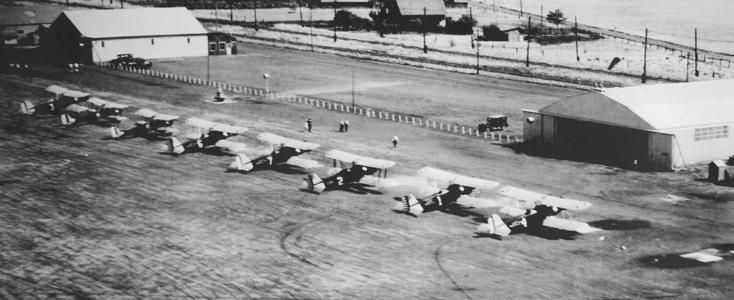
from his grandfather and how happy he was to be part of the unit. As a child, he would accompany his father when he had drill weekends and play football with other kids who came along.
Being a member of the Air National Guard was something he was steeped in. “I just remember back to my dad going off to Desert Storm,” Cael said.
Like his father, grandfather and great-grandfather before him, Cael got his start in aircraft maintenance. But he is the only member of the family to move on to become a pilot. He wanted to serve in the Air National Guard instead of the Air Force because he had no interest in being transferred to a new posting every few years.
“I wanted to be home,” he said. “I wanted Spokane to be home. I have a lot of roots here.”
His father is now retired, but the two did get an opportunity to deploy together before that. “It was cool,” Cael said. “Being able to work with him on the flight line and having him launch me out was so cool.”
Staff Sergeant Damen Gaddis is a boom operator and has been with the 116th for six years. He’s a second-generation member of the unit and his father still serves in the unit. “I enlisted in the Guard when I was 17 years old,” he said.
As the years went by and planes changed, so did the mission of the 116th. During World War II the unit did submarine patrols along the west coast for a time. It was known
as the 116th Fighter Squadron when activated during the Korean War. In the late 1950’s it became a fighter interceptor squadron. When the KC135 Stratotankers arrived in 1976, the unit moved from Geiger field, where it had been since the late 1940s, to Fairchild Air Force Base.
The 116th squadron is part of the 141st Air Refueling Wing, commanded by Col. James McGovern. The wing used to be classified as a “ready reserve” unit, which was only to be activated in cases of high need, McGovern said. It’s now classified as an operational wing.
“Now we’re just like the active duty, but a large portion of our unit is part-time,” McGovern said. “We fly every day. We refuel all the conventional aircraft.”
As a National Guard unit, the 116th has a dual mission, McGovern said, Federal and domestic. Most of what they do is considered federal, refueling aircraft wherever and whenever needed. In domestic operations, they can assist states with their needs.
As an example, McGovern points to the National Guard response to the January 6, 2021 riot in Washington, D.C. The 116th not only supplied fuel to planes transporting Army National Guard troops to D.C., they flew some of the troops themselves. In total, pilots from the 116th flew 37 flights. “The numbers were just astounding,” McGovern said. “We stand in the ready to help the states.”
It’s not unusual for members of the 116th and 141st to be deployed
“We used to have a school teacher.”
It’s not unusual for members of the 116th to spend decades in the unit before retiring. They see themselves as a family, forming bonds strengthened because they aren’t constantly transferring to the next post.
“It’s the Guard family,” Quiqley said. “It’s kind of embedded in our culture. We all band together and take care of each other in good times and bad.”
The Guard family will have more chances to celebrate the unit’s 100-year history, including during a special picnic held during the August drill weekend, McGovern said. Former and current members of the unit will also be invited to a gala on August 9.
around the world. There are currently a little more than 100 members deployed and once they return in April, another hundred will take their place, McGovern said.
He said he’s impressed by the skill and dedication shown by members of his air wing, most of whom have day jobs. “These are airline pilots, electricians,” he said.
“We’re one of 12 flying units in the country to reach their centennial,” McGovern said. “It’s a pretty big deal for the airmen.”
In the meantime, residents can keep a lookout for the KC-135 with the special tail art in the sky over the West Plains. “That plane is what we consider our flagship,” McGovern said. “That’s the one we can actually have nose art on. It’s our baby.”

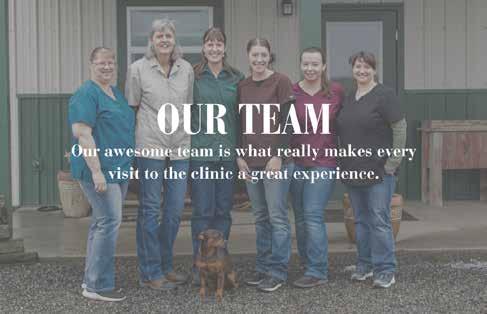 Dr. Jill Swannack • Dr. John Nystrom • Dr. Leah Swannack
Dr. Jill Swannack • Dr. John Nystrom • Dr. Leah Swannack

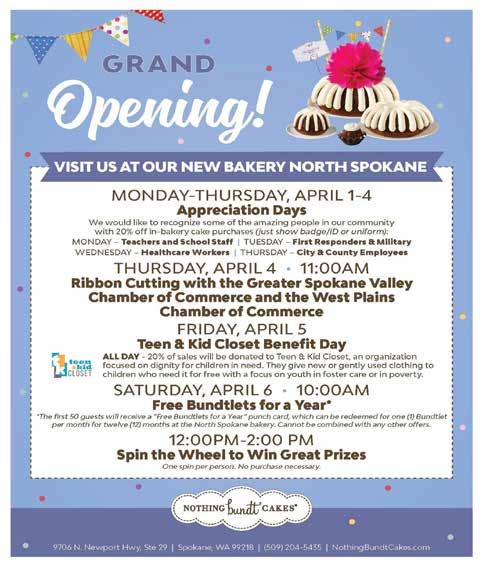
As the scope of chemical contamination of the water in some wells on the West Plains becomes clearer, residents in search of answers are finding that their doctors often aren’t very informed about the chemicals that may poisoning their bodies.
PFAS chemicals, known as “forever chemicals” because they linger in the environment for decades, were found in firefighting foam designed for airplane crashes. The foam was used for decades at Fairchild Air Force Base and the Spokane International Airport. In 2017, contamination was first found at Fairchild and since then testing has been done to identify which wells have been contaminated.
Dr. Francisco Velazquez, the health officer for the Spokane County Regional Health District, said research into PFAS chemicals and their effect on humans, animals and plants are just starting to ramp up. Certain health issues, including some types of cancers and thyroid problems, are believed to be connected to PFAS exposure but the effects of exposure aren’t certain.
“There have been a lot of correlations made, but it’s not definitive,” he said. “That’s not uncommon with environmental contaminants. We do have some associations that make sense.”
Exposure to PFAS chemicals is also thought to cause low birth weight in children and high levels of cholesterol in both adults and children. There could also be an impact on the liver enzymes. “The main metabolic organ could be impacted by the chemical,” he said. “We do have some information, but the correlation is not 100 percent. We, as providers, are learning more every day.”
Velazquez said it has become clear that many doctors aren’t familiar with PFAS chemicals and the ongoing research. He said the health district is making an effort to educate local doctors on how to care for exposed patients.
While the human body has some ability to filter out PFAS chemicals, it’s not known how much the body can remove or how quickly. Switching to a different water source and/or installing filters to eliminate the chemicals from the water is key, he said. “The bioaccumulation occurs and the metabolism is slow,” he said. “Some of them take decades to clear. The first goal should be to decrease the exposure.”
The only lab in the Spokane area that can do a blood test for PFAS exposure is Quest Diagnostics. Some health insurances may cover the cost of the test if it is ordered by a doctor. Last month Quest announced that it
would offer PFAS blood tests to West Plains residents for $306.
Gail Oneal was one of the speakers at last month’s “How to Talk to Your Doctor abour PFAS” event. The registered nurse, who holds a PhD in nursing and studied environmental health, has lived on the West Plains to the east of Hayford Road for nearly 30 years. The federal government has been testing local wells in a certain geographic area around Fairchild for free, but the boundary of the testing area is Hayford Road. Oneal said wells in her neighborhood have not been tested yet, but will be soon because of a new testing effort launched by the Washington State Department of Ecology and the Environmental Protection Agency.
Oneal said that if there are high levels of PFAS chemicals in a person’s blood, their doctor will likely want to do more tests to check the function of the liver, kidney and thyroid. Additional tests could be ordered based on the results of those function tests. “It will depend on each result,” she said.
It’s not yet known how constant exposure affects the body, Oneal said. “It’s really hard to determine,” she said. “It’s really hard to know what high levels mean long term.”
Many West Plains residents have questioned the impact of PFAS chemicals on fruit and vegetables irrigated with contaminated water and the effect the chemicals have on farm animals that are eaten or provide milk or eggs. That is something that is still being studied, he said. “We don’t know that for certain,” he said. “Every week there’s some new article on additional research.”
Velazquez said it appears that the contamination transfers to some plants but not others. He recommends that people garden in raised beds with fresh, clean dirt and use a different irrigation source. Vegetables should also be washed and peeled before eating, he said.
Oneal, like many West Plains residents, has a vegetable garden and also has chickens to provide eggs. She’s been trying to do her own research into the safety of eating what she grows and has switched her chickens to a clean source of water. “Some plants will hold it up and keep it from the fruits and vegetables, some will pass it through,” she said.
Much of the community forum was spent instructing people how to approach the issue with doctors that are uninformed about PFAS contamination, Oneal said, and to push for a blood test. She recommends bringing information about PFAS contamination to appointments.
“We taught them how to talk to their providers,” she said. “You might have to educate the physician. Don’t take no for an answer. If you’ve had an exposure, you need to be tested. Be informed. Be your best advocate.”


Sponsor ed By:
If you would like to sponsor this section call





 By John McCallum Stream contributor
By John McCallum Stream contributor





Cheney’s fledgling diving program earned its second state trophy with a championship in 3A diving — a rarity among swimming and diving programs in Eastern Washington.
The Blackhawks wrestling program showed it is making strides towards the future with a couple juniors who placed at Mat Classic XXXV, while Medical Lake basketball teams gave it their best in post season runs.
Boys swimming
Blackhawks junior Alma Smith captured his second consecutive 3A state title in the diving competition held Feb. 15 at the Federal Way Aquatics Center. Smith easily outpointed James Ferrier of Gig Harbor, 401.90 to 297.35, to improve on the point total that earned him his first title in 2023 in an event typically up to this point dominated by divers from Western Washington high schools.
Smith’s dives were technically more difficult than the other divers, earning him more points. Heading into his final dive he needed 18 points to earn the title — and received 40 points.
This is the second year of existence for the Blackhawks diving program, now led by head coach Greg Schmidt. Smith, who started diving in 2021, is also coached by Aaron Kilfoyle at the Inland Empire Diving Club.
Trenton Moore and Mason Bennett took home fifth and seventh place medals respectively at Mat Classic XXXV Feb. 23 – 24 at the Tacoma Dome.
Moore opened with a bye at








509-242-7752
175 pounds, and advanced to the quarterfinals with a 12-0 secondround major decision over Ryan Cortez-Avile of Heritage. Sent to the consolation bracket after a 10-5 loss to Ever Yamada of Edmonds-Woodway, Moore battled back with a 9-6 decision of Arthur Ruff of Hazen and a 6-4 decision of Carson Bailey of Lakes before losing a tight, 6-5 decision to Bainbridge’s Garret Goade.
Moore decisioned Mead’s Caden Brooks, 8-2, for fifth.
Bennett also received a bye at 144, bumped to the consolation bracket with a 9-5 second-round loss to Parker Scheschy of Auburn Riverside. After another bye, Bennett advanced with a 3-1 decision of Mead’s Evan Urann and 9-4 decision of Ballard’s Miles Price before losing to Tyson Ramsey of Central Valley’s Ridgeline High School 6-4.
Bennett earned a 12-6 decision over Arlington’s Chase Deberry to place seventh.
Also competing at Mat Classic was Camron Bogle at 132. Bogle pinned
Alix Jeanniton, Jr. of Lakes in the first round, but lost in the second round to Justin Broxton of Kelso, 3-1.
Bogle advanced in the consolation bracket with a pin of West Seattle’s Jackson Prater-Thaden and a 4-2 decision of Wesley Fox of Capital before ending his tournament run just short of the medal round via a 6-5 decision loss to Mark Kucheryaviy of Kennewick.
Jennifer Tian and Jalisca Holmgren also competed in the 3A/4A girls state tournament. Tian lost her opener via a fall to Puyallup’s Kinsey White at 110, finishing with a consolation bracket 3-1 decision loss to Sandy Gayed of Auburn Mountainview.
Holmgren lost in the first round by a fall to Kayce Potts of Kelso, and ended with a consolation bracket loss by a fall to Kylie Michalke of Peninsula.
All three Blackhawks boys are juniors while Holmgren is a sophomore and Tian a freshman.
Cheney placed 29th overall in team scoring. The Blackhawks GSL


opponent Mead captured its third straight 3A state title, setting a scoring record in the process with 272.5 points.
Boys basketball
The Cardinals post season hopes ended with a 70-44 road loss to Riverside on Feb.14 in a game for the Northeast 1A’s third seed to regional action. Maverick Rasmussen led Medical Lake (6-6 NEA, 8-15 overall) in scoring with 14 points.
Girls basketball
Charde Luat paced the Cardinals with 39 points, and Medical Lake advanced in the post season with a 5244 win over Colville in the game for third place in the Northeast A league on Feb. 14. Medical Lake drew ninthranked Cashmere in the opening regional round, and was eliminated by the Bulldogs 53-32 on Feb. 17. The Cardinals (5-7 NEA, 14-11 overall) ended up with a 21st ranking in the state 1A RPI by the Washington Interscholastic Athletics Association.
Junior True Cole was the only Cardinal to advanced out of regionals to Mat Classic XXXV. Cole lost by a fall in his opener to Roman Tabile of Seton Catholic.
He received a bye in his first match in the consolation bracket, and squared off against an old nemesis in the second match — Xavier Cardona of Omak. Cole lost to the senior in the regional semifinals, and lost at Mat Classic in a fall in the second period to the eventual state thirdplace finisher.
Contributed photo Inland Empire Diving Cheney’s Alma Smith celebrates after winning his second consecutive 3A state diving title in competition at the Federal Way Aquatic Center.



For kids ages 2–5 & their families
Drop in to have fun with math! Explore simple math games and activities as well as our play-andlearn toys.
AIRWAY HEIGHTS LIBRARY 1213 S Lundstrom St
Tuesday, March 26, 10am–12pm
If you would like to sponsor this section call 509-242-7752

Tucked away in the Storehouse building along Medical Lake’s main drag is an incredible display of artistry and craftsmanship at the Medical Lake Farmers Market.
Each first and third Saturday of the month, the market springs to life between the historic buildings of Medical Lake and offers attendees fresh produce, locally raised animal products, and sweet and savory creations of all kinds.
Typically, the market only operates between the beginning of June and October, but this year, Market Manager Erin Bishop said the market is experimenting with an indoor concept. After noticing many of the regular outdoor vendors offer products all year long, Bishop said she approached the idea with Geri Johnson, president of nonprofit ReImagine Medical Lake, which oversees the farmers market.
“Farmers markets are a great example of something that is in the heart of our community, within walking distance for a lot of people where they can come and receive food,” Bishop said. “We want to try and make sure that people have an opportunity to purchase food that is…fresh and nutritious.”
The goal for Bishop was to continue providing access to quality local goods that are affordable and also accessible to rural community members that lack access to grocery stores. Multiple vendors at the market also accept assistance programs like WIC and EBT to allow as many people as possible to shop.
“We’re trying to be very intentional…we know that money is very tight for a lot of people and we’re trying to give people ideas and inspiration to help them get excited about eating great food while also supporting our local growers and ranchers,” Bishop said.
Currently, local businesses Cozy Home, which sells all natural cleaning and laundry products, and Johnson Homestead, a local ranch that raises and processes meat products, are on display at the market. Products like jams and biscuits from Bishop’s licensed cottage bakery, The Cannery, can also be found in the space near Farm Salvation.
During the summertime season, shoppers can purchase hydroponic and traditionally grown seasonal fruits and vegetables, farm fresh eggs, and fresh lavender from a nearby flower farm. For this upcoming season, the market expects to expand its offerings with collaborative products between multiple vendors in the hopes that it will inspire shoppers to pair their ingredients together for nutritious
meals.
“People are busy and tired, and the last thing they want to do is think about meal planning,” Bishop said when discussing the possibility of the market offering meal kits using market ingredients. “It's easier to go through the drive-through or have the same thing over and over at home, but we feel that by giving them these ideas, it will inspire them to think about the fresh local ingredients available at their local farmers market.”
Bishop said the market also represents a community interested in investing and sustaining its local producers, farmers and ranchers. Every vendor that chooses to showcase their goods at the Medical Lake Farmers Market is a small business owner crafting and tending to products made with love. Having businesses where things are produced locally provides food security to the West Plains.
“Supporting small businesses is key because truly, it is the backbone of…not just our local economy, but
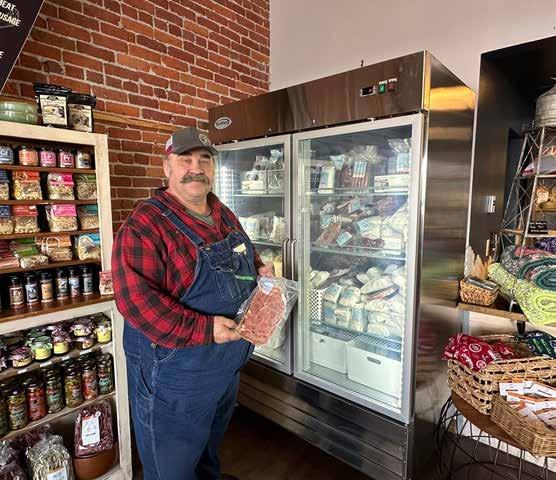
our national economy,” Bishop said. “When we support local farmers, ranchers, and producers, we not only become investors in their businesses, but it helps them keep going and helps them, ideally, keep their costs down if they get good, continuous support.”
Community members who want to participate in the upcoming market season can look forward to extended market hours for Founder’s Day in June and a National Farmers Market Week celebration in August. Playing off the idea of vendors collaborating, the market plans to host a long table dinner in Downtown Medical Lake using ingredients from vendors. The cost of the tickets would go back into the market’s budget to support future activities.
“Customers would enjoy something from most if not all of our food vendors just to showcase the wonderful vendors…and to give people an idea of how much potential there is to be using this local food,” Bishop said. But at its core, the Medical Lake Farmers Market is what every small town is about— community and the act of sharing a meal or a memory with your neighbors.
“We have a clientele ranging from young families and people who are just starting out as parents, bringing their little kids, which has been fun to see them growing up over the last few years that we’ve been open,” Bishop said. “We have senior citizens and people with physical limitations that make a point to come to our market all the time, and they really depend on it.”
Anyone interested in signing up to be a vendor at the Medical Lake Farmers Market or if they want to learn more information about upcoming events, they should look for the market’s social media pages. However, there are some limitations to what can be displayed at the market.
“I would emphasize that we’re a maker’s market, so we focus on people that raise and grow and create things; we don’t have any necessarily raw material type things,” Bishop said. “We… highlight the folks that are bringing something that they’ve created.”
With today’s political landscape often dominated by loud voices from the ideological extremes of both parties, Medical Lake Mayor Terri Cooper — Republican candidate to represent the 5th District in Congress — believes she can be the voice for people in the political middle.
“I think I have the ability to unify people,” Cooper said in a March 6 interview
Cooper, who announced her candidacy on March 2 at the Spokane County Republican Convention, joins a large field of candidates from both parties vying to succeed Rep. Cathy McMorris-Rogers, who decided not to run for reelection to the seat she has held since 2004.
Republicans in the race are Jonathan Bingle, Spokane City Councilman; Michael Baumgartner, Spokane County Treasurer Michael Baumgartner; 7th District state Rep. Jacquelin Maycumber; Rene Holaday, talk radio host and legislative aide to former state Rep. Matt Shea; former state employee John Guenther and Ferry County Commissioner Brian Dansel. Three Democrats have tossed their hat into the 5th District ring: Carmela Conroy, former diplomat, deputy county prosecutor and Spokane County Democratic Party Chair; small business owner Ann Marie Danimus and OB-GYN Bernadine Bank.
Cooper said one of the reasons she decided to run — a decision she didn’t make until a couple days before the county convention — was she realized looking at this list that there was nobody she would vote for.
“I’m not a career politician. Elected official, yes, but I’m not seeking a job, I don’t need a job,” she said. “What I do need is to represent community, like I’ve done in Medical Lake. I’ll just scale it to
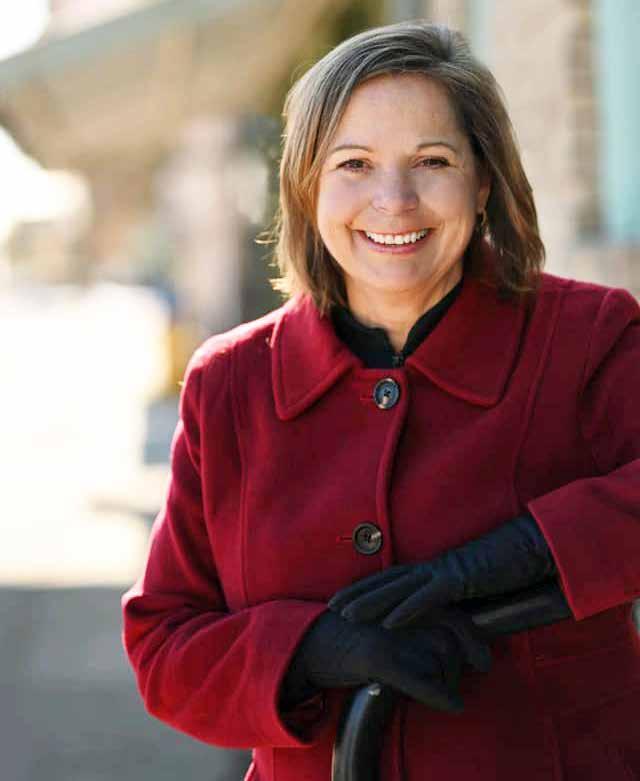
Re*Imagine Medical Lake in 2015.
In 2021, Cooper decided to run for Medical Lake mayor under similar circumstances she is citing in running for Congress.
“Running for mayor never crossed my mind until I saw a lack of anybody stepping in for change,” she said.
As mayor, Cooper faced one of the greatest challenges any elected official can face when wildfires broke out south of the city on Aug. 18, 2023. The resulting Gray’s Road fire burned through homes in the south and southeast portion of the city, as well as developments around Silver Lake, Clear Lake and up to Interstate 90.
Cooper worked with local and state officials, providing fire and shelter information to residents as wind-driven fires devoured forests and homes. Afterwards, she worked on victims recovery, helping to establish the Spokane Region Long Term Recovery Group, a group working with government and nonprofits to aid victims of the Grays Road Fire and the Oregon Road Fire which broke out at the same time north of Spokane around Colbert.
These experiences gave Cooper the feeling she was capable of leadership. Her work in the courts provided a knowledge of government finances, experience with a wide variety of individuals experiencing different, sometimes difficult, situations and the daily operations of government.
Eastern Washington.”
Cooper has called Medical Lake home since her family moved there in 1973 when her father was stationed at Fairchild Air Force Base. She graduated from Medical Lake High School, married her high school sweetheart, Ken Cooper, soon after, and after returning to Medical Lake in 1982, raised three children and now have 11 grandchildren.
Cooper cites her experience as a public servant as another reason why she should be elected to Congress. She worked six years as court administrator in Medical Lake before taking over a similar position at Cheney Municipal Court in 2004, where she served until retiring in October, 2023.
Cooper passed the Washington State Judicial Officer Exam in 2002, enabling her to also serve in the
capacity of court commissioner, something she did at Cheney and also at Airway Heights Municipal Court. She founded the Cheney Youth Court in 2008, and has implemented other court and probation services such as a local community service program, cognitive awareness group and individual classes, traffic school and Eastern Washington University career internship.
She is a founding member of the Washington State Association of Youth Courts and the Eastern Washington Court Managers group. In 2017, she was presented with the Court Management Council’s Court Manager of the Year award.
Together with her sister, Gerri Johnson, Cooper founded the citizen-led community revitalization organization
“The minutia (of government) is completely different inside than it is looking from the outside in,” she said.
Cooper said she has brought on a consultant and campaign manager to help her run for Congress. While she hasn’t put out an official platform yet, some of the points she brings up echo most other candidates positions — better control of the budget, preserving the four Lower Snake River Dams and securing U.S. borders. Cooper said she will focus on protecting the interests of Eastern Washington — not only rural but also urban needs and concerns.
“Ninety percent of people want the same thing,” she said. “Public peace and safety, a living wage, the ability to raise a family, own a home and be secure.”
Between the longer days and milder weather, it’s easy to look ahead and start dreaming about spring and outdoor activities that come with the season. I’m especially looking forward to the birdwatching programs and bird walks happening at four locations throughout the county.
One of the “Introduction to Birdwatching” presentations by the Spokane Audubon Society takes place at Cheney Library
Every 11 seconds, an older adult is treated in the emergency room for a fall.
Even if there is no injury, falls carry a heavy impact to quality of life. Many older adults fear falling, and if the fear is intense, they may limit their activities and social engagements. This can result in further physical decline, depression, social isolation, and feelings of hopelessness. Ultimately, the fear of falling may lead to loss of independence.
In 2022, the number of fallrelated fire department calls were: 2,927 for the City of Spokane Fire Department, 3,200 for Spokane Valley Fire Department, and 10,000+ for
(601 First St) on Tuesday, March 19, at 6:30 pm. We learn how to set up and use binoculars, how to identify birds, and what apps and books are best to refer to when you’re birdwatching.
And then on Saturday, March 23, registered participants meet at Turnbull National Wildlife Refuge (26010 S Smith Rd) to take a guided walk and practice their new birding skills. The trails for this walk are accessible.
Later in spring, you can attend the “Introduction to Birdwatching” session at Medical Lake Library (321 E Herb St) on Monday, May 6, at 6:30pm, and sign up for the bird watching hike around Medical Lake that meets up at Waterfront Park (S Leferve St/Hwy 902) on Saturday, May 11.
If you’re looking to explore other parts of Spokane County, one of the other two birdwatching presentations and walks may be just what you’re looking for.
Another early spring session takes place at North Spokane
all of Spokane County. The rate of fall-related deaths among Spokane County residents ages 65 and older was the highest for all Washington state counties during 2017 to 2021.
Aging and Long Term Care of Eastern Washington (ALTCEW) has partnered with Spokane County Library District (SCLD) to bring the fall-prevention class “A Matter of Balance” to the library.
The classes are designed for older adults who are concerned about falls and also for those who want to improve their flexibility, balance, and strength. Participants need to be 60 or older, mobile (with or without the use of an assistive device such as a cane or a walker), and able to problem solve.
During the class, participants learn strategies to change their viewpoint to see falls as controllable, set realistic goals for increasing activity, identify environmental adjustments to reduce risk factors for falls, and learn gentle movement to increase flexibility, strength, and balance.
Library (44 E Hawthorne Rd) on Thursday, March 28, at 6:30 pm, and the corresponding walk is at Waikiki Springs (N Fairwood Dr) on Saturday, March 30. Explore the eastern side of the county with a presentation at Spokane Valley Library (22 N Herald Rd) on Thursday, April 11, at 6:30pm, followed by a walk through the Saltese Flats Wetlands, starting from the Doris Morrison Learning Center (1330 S Henry Rd) on Saturday, April 13.
Please note that registration is required for each of the walks. You can sign up at www.scld.org/ bird-events.
Also, be on the lookout for Birding Backpacks, coming to our Library of Things this spring. These backpacks contain everything you need for a successful birding experience, including binoculars, bird identification guides, maps of local trails, and much more. To learn more about the Library of Things, you can visit www.scld. org/things.
Classes are led by two trained volunteer coaches over eight sessions of group discussion, problem-solving, brainstorming, and “A Matter of Balance” exercises. Each participant receives a workbook. Session seven includes a visit from a guest health care professional who demonstrates how to get down on the ground safely, how to get up, and answers any medical questions related to falls.
The “A Matter of Balance” classes are free. You can sign up to attend the eight-session class at Cheney Library (610 First St) on Mondays and Wednesdays, April 15 to May 8, at 10:30 am to 12:30 pm. Sign up at www.scld. org/cheney-balance-class.
You can find additional class offerings at other SCLD libraries by visiting www.scld.org/ balance-classes.
If you have questions about the class or can’t attend the scheduled sessions, you can call the ALTCEW office at 509-4582509 to get more information and learn about other fall-prevention help.
April 3, 2024
Give the gift of reading.
Your donation helps provide books for 1,000+ kids and teens this summer.
Scan the code
Or visit www.supportscld.org/lgd
ALL SCLD LIBRARIES
April 7–13
Bring in your nonperishable food items to help those facing food insecurity.
Your food donation may reduce past overdue fees on your account. Stop by your library to learn more.

www.scld.org
The Stream is committed to serving the West Plains area through excellent community journalism. We can’t do it at all without you, our readers, and we can’t do it for long without support from our advertisers. Please thank our business partners and look to them when offering your patronage.
Our sincere appreciation to the following businesses for their foundational partnerships withThe Stream and its partner publications:








Of note: This thank you message was produced by The Stream’s advertising team, which works its tail off on behalf of partner businesses, helping them share their messages through advertisements. This is an independent function from The Stream’s editorial team, which has its own evaluation process to determine the community news stories and features it pursues. For more information about a win-win partnership that expertly markets your business to thousands of readers (while making this home-grown community newspaper possible), email advertise@westplainsstream.com. With story ideas, contact editor@westplainsstream.com.
The West Plains Stream P.O. Box 363
Liberty Lake, WA 99019 Phone: 509-242-7752
www.westplainsstream.com
The Stream is published monthly by or near the 15th of each month. It is distributed free of charge to every business and home in Airway Heights, Fairchild Airforce Base, and Medical Lake area. Copies are located at drop-off locations in Airway Heights, Medical Lake and the surrounding area.




Submitted materials
Announcements, obituaries, letters to the editor and story ideas are encouraged. Submit them in writing to publisher@westplainsstream.com. Submissions should be received by the 1st of the month for best chance of publication in the following month’s Stream.
Subscriptions
Subscriptions
Correction policy
The
Paying for college in 2024 can present an incredible burden on students and their families, and thanks to the support of their community and some dedicated volunteers, Medical Lake High School students have the chance to earn scholarship cash to pay for college.
Medical Lake’s Dollars for Scholars chapter is part of the Scholarship America nonprofit sphere and uses the power of community to crowd fund the education of their youth. The roots of the nonprofit go back to founder Dr. Irving A. Fradkin’s 1957 school board campaign in the town of Fall River, Massachusetts.
While Fradkin lost the school board election, his mission to organize and distribute college scholarships to Fall River High School students lives on in more than 430 local chapters across the United States. The Medical Lake chapter came much later in 2000 after a representative from Scholarship America met with members of the local Kiwanis Club, including current President Steven Meltzer, and floated the idea of establishing one in the town.
“The first year we gave out scholarships was 2001, and we gave out $10,600 in scholarships,” Meltzer said recalling the nonprofit’s first operating year. “That was primarily from existing community organizations and businesses that had been giving small amounts of money, and we’ve been very fortunate to continue those partnerships and… growth.”
Last year, Dollars for Scholars gave out approximately $53,000 in scholarships funded by the Medical Lake community and the nonprofit’s endowment of $210,000. The nonprofit’s Scholarship Chair Shelly Niblock said nearly every student who made it through the application process in the last two years has been awarded at least one scholarship.
“How many make it to the end? It’ll probably be two-thirds of that… maybe…which in a class of 124 is pretty high,” Niblock said. “It’s higher than what we usually have, (but)
whether we’ll be able to maintain that statistic this year, I don’t know.
This year’s applicant pool is around 56 students, and if previous trends continue, donations made to the Medical Lake Dollars for Schools chapter could support 37 students in various degree programs. The nonprofit itself funds ten individual scholarships that can be awarded to different students and different dollar amounts, and some students can receive funds for all four years.
“The whole idea is not just to get them there (to college), but to get them through (degree) completion,” Niblock said. “We have a group of scholarships that we’ve stratified and it kind of goes along with how the school recognizes achievement as well; you have… a principal’s honor roll, you have a regular honor roll, and then we have a merit scholarship.”
Other scholarships include funds for students with education accommodation plans and individual education plans, as well as funds for trade crafts, scholarships donated by Medical Lake businesses, and legacy scholarships or bequests. The scholarships can have specific metrics a student must meet to qualify for the scholarship, while others are selfless contributions to the dreams of young community members.
“It doesn’t matter what you want to go into, I mean we’ve had students become rocket scientists, hairdressers, and everything…I think that there’s something for everyone,” Niblock said. “One student, she went into theoretical math, so I find it interesting what these students decide to do because they’re as varied as the number of students that are out there.”
To fund the nonprofit’s internally funded scholarships, members of the board and volunteers work together hosting four distinct fundraising events annually. At the end of the month, community members can join the Dollars for Scholars chapter at St. Anne’s Parish Hall for its Spring Thing. Watch the Gonzaga Bulldogs battle other top basketball teams from across the nation, enjoy food and drinks, and bid in the fundraising auction.
Depending on how much money
is raised at Spring Thing, as well as May’s Super Yard Sale, September’s Sip it Forward, and the Holiday Hopes and Dreams Scholarship Wreath Raffle, the Dollars for Scholars chapter could end up providing multiple scholarships at different dollar amounts to more students. The extra funds could increase the nonprofit’s ability to support its youth, like providing multiyear scholarships throughout the receiving student’s academic career.
“Scholarship America…would like to see the chapters focus on those kinds of things because what they a_re seeing is that it’s easy enough to get them through that first year, but to get them through graduation, that sometimes is a little bit tougher,” Meltzer said. “Part of the reason that we have the endowment fund is that this is a forever thing; we’re always going to have kids coming out of the school that may need some additional financial support.”
However, the Medical Lake Dollars for Scholars chapter is facing a growing challenge of dwindling interest in volunteering to keep the chapter up and running. Modern work and school schedules can make it difficult
for people to engage in communitybased projects, but for now, it seems the chapter is holding steady with its six-member executive board. However, both Meltzer and Niblock said a helping hand at an annual event or two is always welcome.
“We need some board members that see the same vision that we have and the importance of having this (program) in the community, not only for their kids but for every succeeding generation after that,” Meltzer said. Anyone interested in donating or volunteering to support the mission of the Medical Lake Dollars for Scholars nonprofit can find more information on the Facebook page or by contacting a board member through the website.
“To know that your community is behind you and is putting money into you I think helps students to take what they’re doing more seriously…and to work hard and to do well in whatever (they choose),” Niblock said. “I don’t care if you’re a diesel mechanic or if you want to be a doctor. The idea is ‘What is it that you want to do and how do you plan to get there?’, and that’s where we want to help you…is how you get there.”















